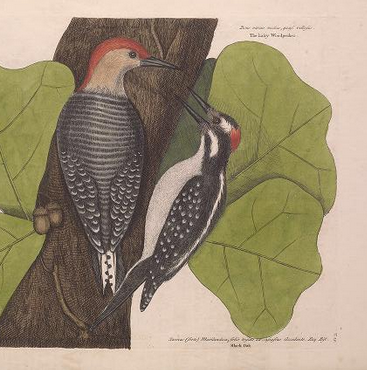I love reading what other people think about birds and words and bird words. I love it even more, though, when they’ve taken the time to do a little homework.
The presence in our backyard over the past couple of days of a female Hairy Woodpecker got me to thinking about it again. Most of us probably already know where the name — and its counterpart in scientifiquese, villosus — come from, but how would you find out if you didn’t?
Google won’t work here. I repeat: google won’t work here. Yes, the correct answer does happen to be out there in the first two pages of links it turns up, but how do you sort the wheat from the dross and the gold from the chaff?
Ad fontes, friends.
Confronted with a question like this, always go to the original description of the bird, which can be found (except in the case of the very most recently discovered species, of course) by consulting the index to Peters.
Bookmark it.
The index sends us to Volume VI. Widespread and common in eastern North America, the Hairy Woodpecker would have been among the first birds encountered by European immigrants, so it’s no real surprise to find that the original description was Linnaeus’s, in the Twelfth Edition of the Systema, published in 1766.
Bookmark it.
The Archiater, of course, never saw this most charming of woodpeckers in life, and his description is based on the published accounts of several others, including his Fenno-Swedish disciple Pehr Kalm, the English naturalist Mark Catesby, and the great French ornithologist Mathurin Brisson. Happily, Linnaeus was as good a bibliographer as he was a scientist, so we have clear citations to each of those works.
Bookmark them all.
Kalm, we find, encountered this bird at Raccoon, New Jersey, where he found it an abundant pest in orchards, excavating its nest holes in the apple trees.
Brisson never saw the bird in life, but described it at length from specimens sent from Canada to Réaumur by the French trader and explorer Pierre Gaultier de Varennes et de la Vérendrye.
Both Brisson and Kalm (and, following those sources, Linnaeus) credit Catesby with first adducing the name “Hairy Wood-Pecker,” so we turn to his, the first comprehensive work on the natural history of the English colonies and the description he gives there of the “Picus medius quasi villosus.”
The Back is black, with a broad white stripe of hairy feathers, extending down the middle to the Rump.
It’s not the tibia, it’s not the nasal tuft, it’s not the male’s nuchal patch. It’s the bird’s back that gives this species its English and its scientific names.
Next time the question comes up — in a “trivia quiz” or in the car on the way home from a birding trip — you’ll know the answer. More importantly, you’ll know how to figure out the next nomenclatural puzzle somebody poses: no more guessing.



